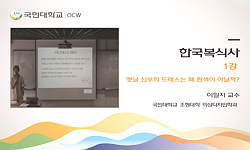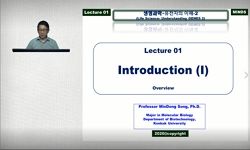Silk has been used extensively in textile applications because of its good luster and feel. However, the low elongation and elastic recovery of silk has limited its use in a wider variety of textile applications. In this study, silk textile samples we...
http://chineseinput.net/에서 pinyin(병음)방식으로 중국어를 변환할 수 있습니다.
변환된 중국어를 복사하여 사용하시면 됩니다.
- 中文 을 입력하시려면 zhongwen을 입력하시고 space를누르시면됩니다.
- 北京 을 입력하시려면 beijing을 입력하시고 space를 누르시면 됩니다.

Effect of treatment temperature on mechanical properties of silk textiles made with silk/polyurethane core-spun yarn
한글로보기https://www.riss.kr/link?id=A103669786
- 저자
- 발행기관
- 학술지명
- 권호사항
-
발행연도
2016
-
작성언어
English
- 주제어
-
등재정보
KCI등재
-
자료형태
학술저널
-
수록면
108-112(5쪽)
-
KCI 피인용횟수
2
- 제공처
-
0
상세조회 -
0
다운로드
부가정보
다국어 초록 (Multilingual Abstract)
Silk has been used extensively in textile applications because of its good luster and feel. However, the low elongation and elastic recovery of silk has limited its use in a wider variety of textile applications. In this study, silk textile samples were made with a highly twisted silk/polyurethane core-spun yarn. They were immersed in water and dried at different temperatures, and the effect of treatment temperature on the mechanical properties of the silk textile was examined. It was found that the water temperature strongly affected the morphology and mechanical properties of the silk textile, whereas the drying temperature did not. As the water temperature was increased, the weft silk yarn became tangled and the interval between warp yarns decreased, resulting in shrinkage of the silk textile. When the silk textile was immersed in water at high temperature (i.e., 100°C), the elongation of the textile increased eight-fold as compared to an untreated silk textile. The maximum elastic recovery ratio of the silk textile was 96.7%.
참고문헌 (Reference)
1 Bo Z, "Production of Milk protein fiber polyurethane core-spun yarn" 8 : 014-, 2007
2 Shi FJ, "Modelling the tensile properties of modal/polyurethane core-spun stretch yarn" 20 (20): 30-32, 2012
3 Lee JH, "Effect of residual sericin on the structural characteristics and properties of regenerated silk films" 89 : 273-278, 2016
4 Petrulis D, "Effect of manufacturing parameters of covered yarns on the geometry of covering components" 79 (79): 526-533, 2009
5 Helali H, "Effect of elastane draft on the rheological modelling of elastane core spun yarn" 103 (103): 451-457, 2012
1 Bo Z, "Production of Milk protein fiber polyurethane core-spun yarn" 8 : 014-, 2007
2 Shi FJ, "Modelling the tensile properties of modal/polyurethane core-spun stretch yarn" 20 (20): 30-32, 2012
3 Lee JH, "Effect of residual sericin on the structural characteristics and properties of regenerated silk films" 89 : 273-278, 2016
4 Petrulis D, "Effect of manufacturing parameters of covered yarns on the geometry of covering components" 79 (79): 526-533, 2009
5 Helali H, "Effect of elastane draft on the rheological modelling of elastane core spun yarn" 103 (103): 451-457, 2012
동일학술지(권/호) 다른 논문
-
- 한국잠사학회
- ( Wazid Hassan )
- 2016
- KCI등재
-
- 한국잠사학회
- ( Yeon Su Bae )
- 2016
- KCI등재
-
Storage stability of silk solution for viscosity and electrospinnability
- 한국잠사학회
- ( Su Jin Kim )
- 2016
- KCI등재
-
Effect of centrifugation on the structure and properties of silk sericin
- 한국잠사학회
- ( Chun Jin Park )
- 2016
- KCI등재
분석정보
인용정보 인용지수 설명보기
학술지 이력
| 연월일 | 이력구분 | 이력상세 | 등재구분 |
|---|---|---|---|
| 2022 | 평가예정 | 계속평가 신청대상 (계속평가) | |
| 2021-12-01 | 평가 | 등재후보로 하락 (재인증) |  |
| 2018-01-01 | 평가 | 등재학술지 선정 (계속평가) |  |
| 2017-12-01 | 평가 | 등재후보로 하락 (계속평가) |  |
| 2013-01-01 | 평가 | 등재 1차 FAIL (등재유지) |  |
| 2010-01-01 | 평가 | 등재학술지 유지 (등재유지) |  |
| 2008-01-01 | 평가 | 등재학술지 유지 (등재유지) |  |
| 2005-05-17 | 학술지명변경 | 한글명 : International Journal of Industrial Ento -> International Journal of Industrial Entomology |  |
| 2005-01-01 | 평가 | 등재학술지 선정 (등재후보2차) |  |
| 2004-01-01 | 평가 | 등재후보 1차 PASS (등재후보1차) |  |
| 2003-01-01 | 평가 | 등재후보학술지 선정 (신규평가) |  |
학술지 인용정보
| 기준연도 | WOS-KCI 통합IF(2년) | KCIF(2년) | KCIF(3년) |
|---|---|---|---|
| 2016 | 0.2 | 0.2 | 0.17 |
| KCIF(4년) | KCIF(5년) | 중심성지수(3년) | 즉시성지수 |
| 0.18 | 0.15 | 0.279 | 0.11 |




 KCI
KCI



